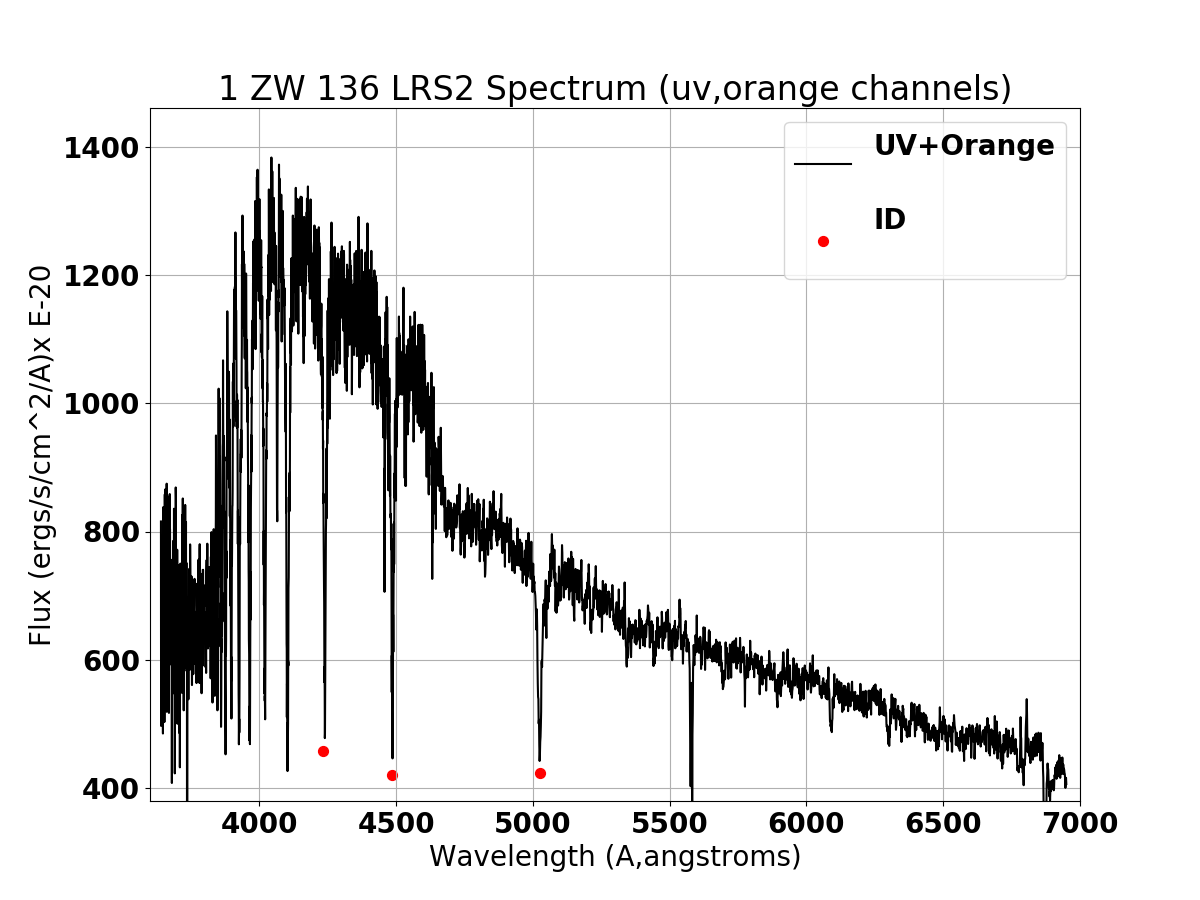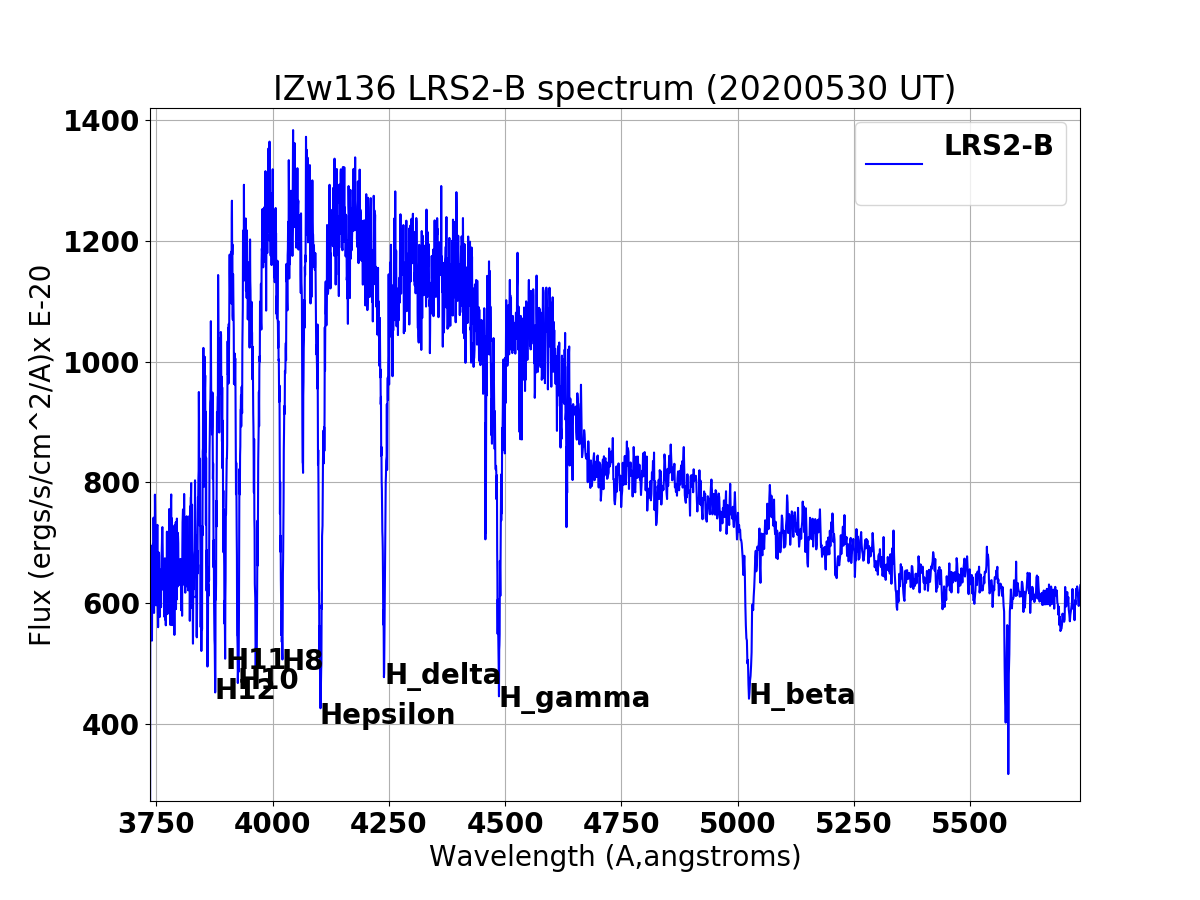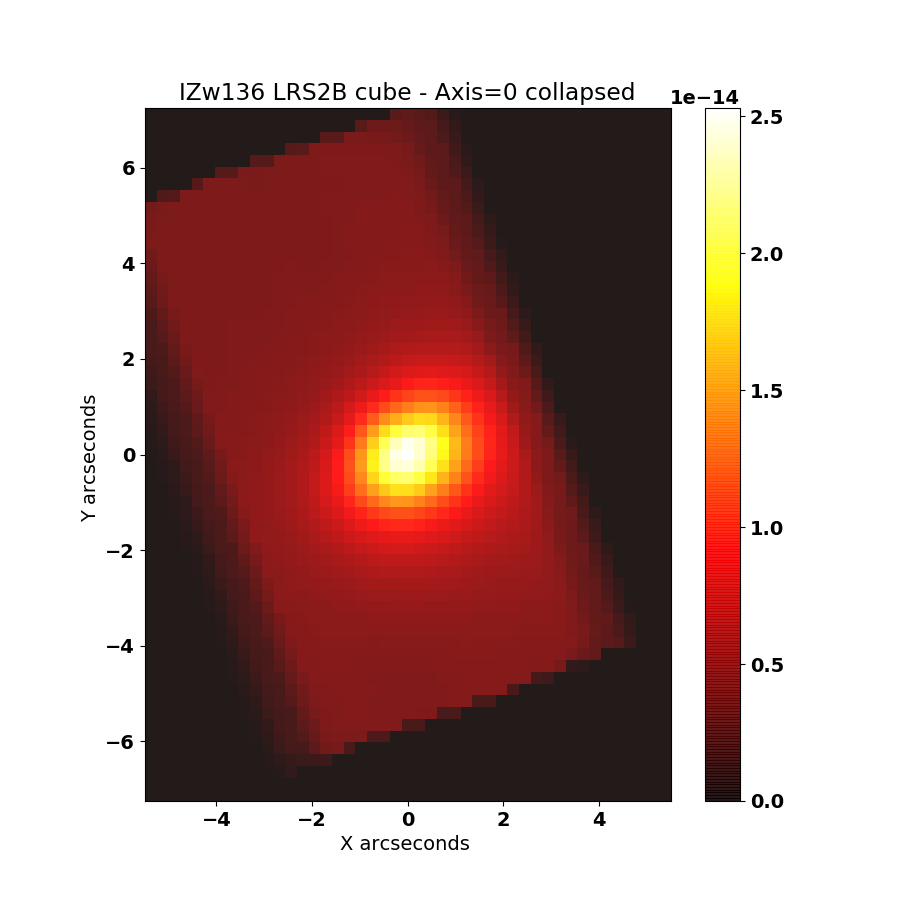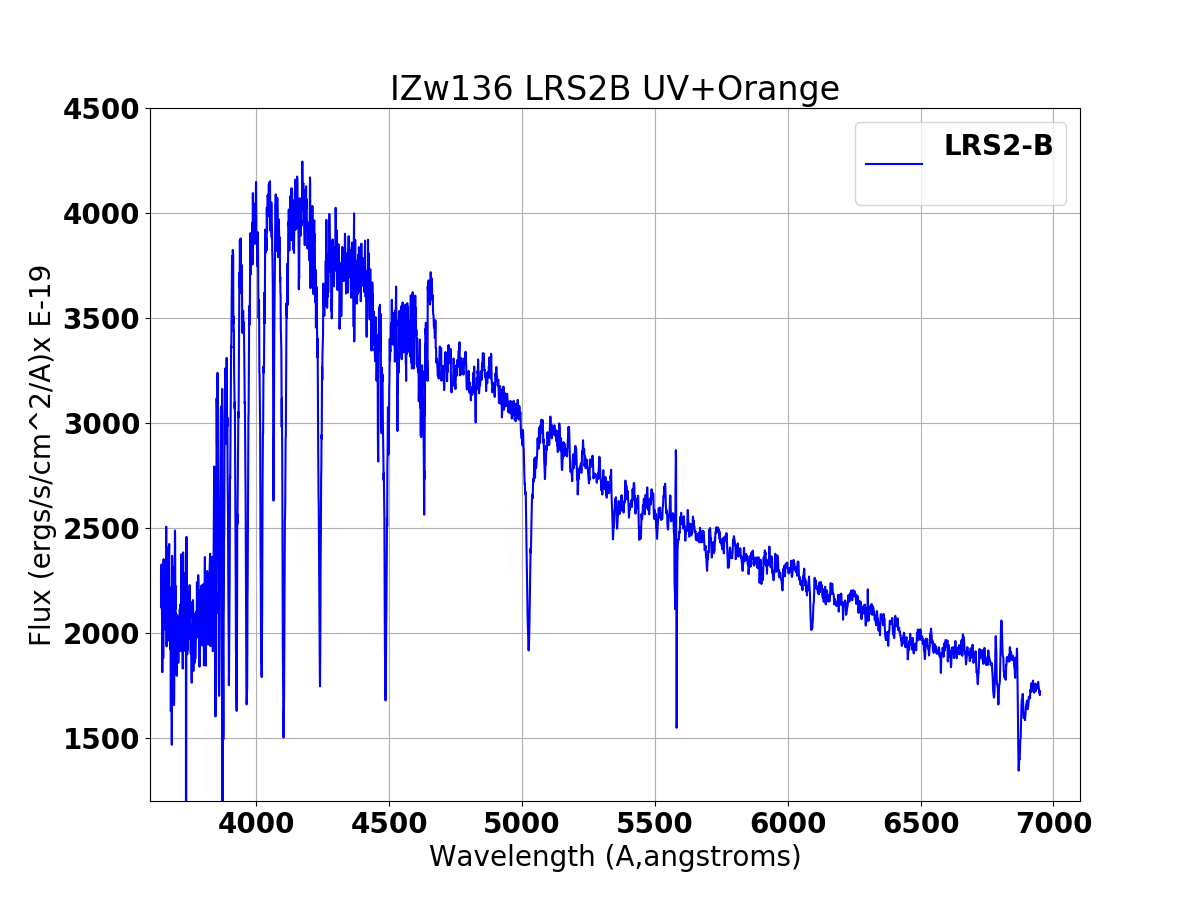A redshift for IZw136 from LRS2-B
Updated: Aug26,2020
Primary List
- Introduction.
An LRS2-B observation of 1Zw136
In May of 2020 (the night of 20200530 UT) we obtained an LRS2-B observation of
IZw136 for Jimi Lowrey. I used the public HET night report reader to collect this
information about the observation:
HET night report reader: https://het.as.utexas.edu/HET/hetweb/vlrweb/RR/reader.php
NOTE: Click the very top banner (HET Night Report Reader) to go to:
https://het.as.utexas.edu/HET/hetweb/vlrweb/RR/index.php
From here you can navigate to any night in question.
The night that Jimi's observations were made: May29,2020 (2020-05-29) Civil Date!!!!
Recall the NR sysetme uses civil dates, not UT.
The observation for JL:
LRS image = lrs20000009_01
target name = eng_galaxy_1_056_E
Exposure start time = 04:21 UT
Exposure (seconds) = 600
progran number = ENG20-2-000
Also of interst:
twilight flats = lrs20000002_01 to lrs20000007_01
BD+28_4211_056_E (LRS2-B spc standard) = lrs20000011_01 (9:48 UT)
BD+28_4211_056_E (LRS2-R spc standard) = lrs20000012_01 (9:51 UT)
LRS2 cals = obs=20-25 (arcs and lamps), obs=1 (exp1-11) (bias)
Originally I used pipeline reductions from GrgZ's panacea code that I retrieved form TACC :
ssh sodewahn@wrangler.tacc.utexas.edu (_scotacc and token 2F)
To pull the cube files I used:
% scp -r sodewahn@wrangler.tacc.utexas.edu:/work/03946/hetdex/maverick/LRS2/ENG20-2-000/20200530_0000009_exp01_\*_cube.fits .
--------------
For completeness, I am also pulling the raw lrs2 and acm /hetedata/data directories
for that night (20200530 UT):
[sco@mcs 20200530]$ pwd
/home/mcs/sco/HET_IZw136/20200530
[sco@mcs 20200530]$ cp -r /hetdata/data/20200530/lrs2 .
[sco@mcs 20200530]$ cp -r /hetdata/data/20200530/acm .
I transfer this directory to sco2019:
% pwd
/home/sco/jimiL_IZw136
% scp -r sco@buckaroo.as.utexas.edu:/home/buckaroo/sco/HET_IZw136 .
**** NOTE: I also pulled 20200529 in case I want lrs2 cals from the early evening.
% /home/sco/jimiL_IZw136/HET_IZw136
% redshitf.sh --help
 |
A 1-D spectrum from UV and Orange channels of a 20200530 LRS2-B spectrum
of 1 ZW 136 (Ra,Dec = 16:13:30.19 +51:03:35.6) is shown. I identified 3 lines
that are marked by the red circles: from right to left thay are H_beta,
H_gamma, and H_delta. The continuum for this specturm appears to be much to
vlue for an ordinary E+A galaxy, but I simply wanted to see how close these
identifications, made manually with an interactive plotting routine, might agrree.
The results are summarized below:
Wave_obs Wave_rest Feautre Vobs(km/s)
4238.900 4101.740 H_delta 10031.8
4486.300 4340.470 H_gamma 10079.3
5025.100 4861.330 H_beta_L 10106.5
Mean Velocity = 10072.534 -+ 21.822 km/s
The mean error of ±21.8 km/s is surprisingly small.
|
Later I refined the LRS2 spectrum plotting process and I now have the
results below.
 |
A 1-D spectrum from UV and Orange channels of a 20200529 LRS2-B spectrum
of 1 ZW 136 (Ra,Dec = 16:13:30.19 +51:03:35.6) is shown. I have identified 8
Balmer absorption lines that are labeled above. The continuum for this specturm
appears to be much bluer than for an ordinary E+A galaxy, but the feature identifications
seem secure. Rejecting the H_epsilon line, the final table of radial velocity values is shown below
Wave_rest Feautre Wave_obs V(km/s)
4101.74 H_delta 4239.69 10082.46
4340.47 H_gamma 4484.69 9960.98
4861.33 H_beta 5023.62 10008.04
3750.15 H12 3875.03 9982.75
3770.63 H11 3897.95 10122.78
3797.90 H10 3924.75 10012.76
3889.05 H8 4018.96 10014.48
Mean Velocity = 10026.3 ± 21.5 km/s
mean redshift, z = 0.0334 ± 0.0001
|
In Aug2020 I spent some time studying up on numpy (see NumPy Studies
and in the course of that I developed gregz_002.py (a modified version of a simple GregZ code). I
used this to analyza and play with the data cube from Greg that combines the ouv and orange channels
into one data cube. I used this two make the two plots below.
See notes in /home/sco/jimiL/red_Aug25_2020/Aug25_01/README.red_Aug25_2020
Data cube = eng_galaxy_1_LRS2B_cube.fits
% python gregz_002.py
% cp spectrum.dat spectrum.dat_sco
% vi spectrum.dat_sco # just remove header stuff
% cubespec.sh spectrum.dat_sco
Flux min,max = -0.2713111E-15 0.4244979E-15
Enter desired exponent (-14): -19
4727 3
Resulting file = spectrum.table (and params,parlab files)
% mkdir plot1
% cd plot1
% cp ../spectrum.table .
% cp ../spectrum.parlab .
% Generic_Points N
% getrc
% xyplotter_auto spectrum wave flux 1 N
% xyplotter List.1 Axes.1 N
 |
|
GregZ's data cibe (eng_galaxy_1_LRS2B_cube.fits) was collapsed with gregz_002.py to give
an integrated light image covering signal from 3640 angstroms to 6949 angstroms.
|
 |
|
IZw136 LRS2-B spectrum extracted with R=1.5 arcsecond circular aperture.
|
Return to top of page.
Back to calling page



